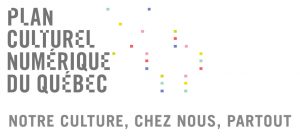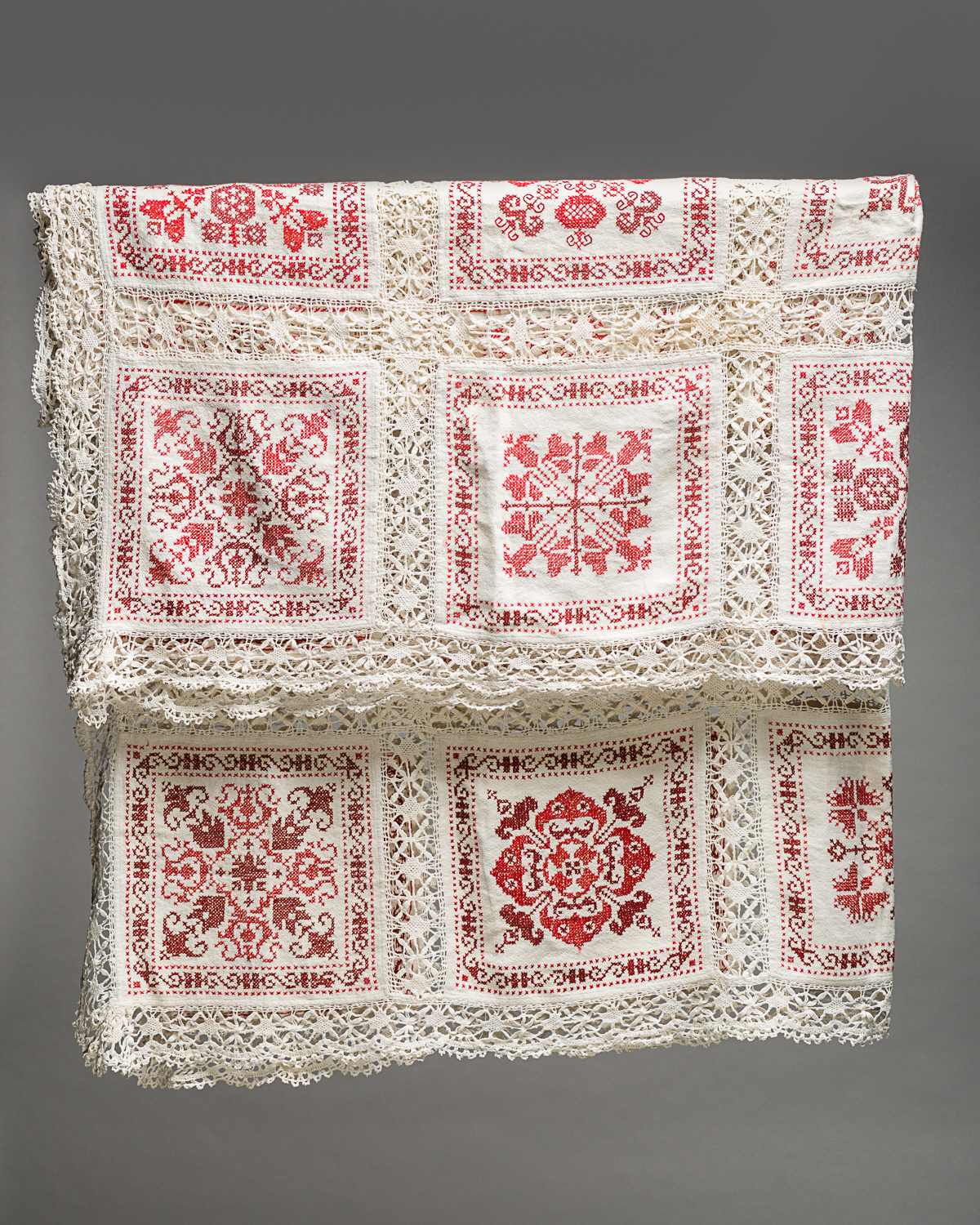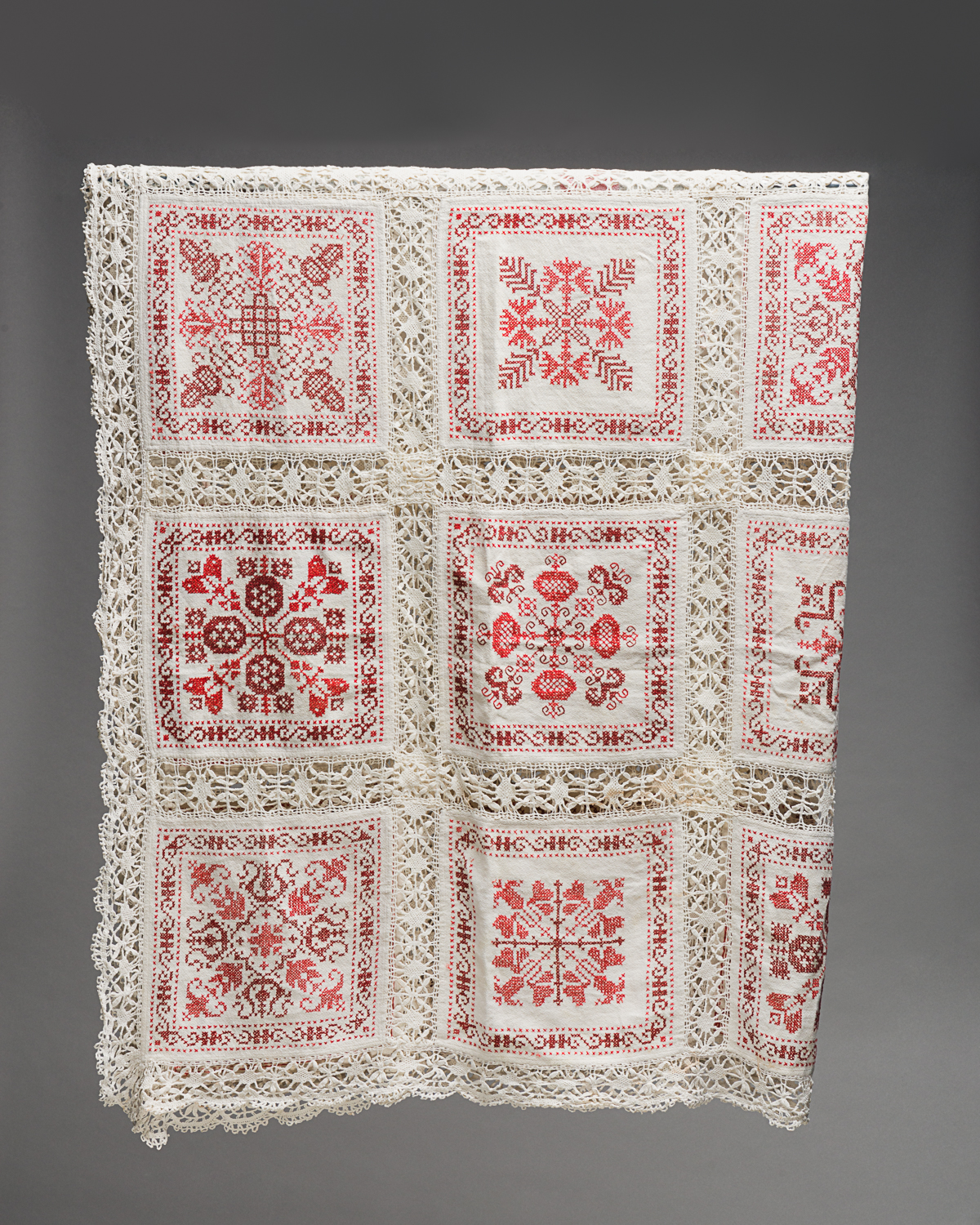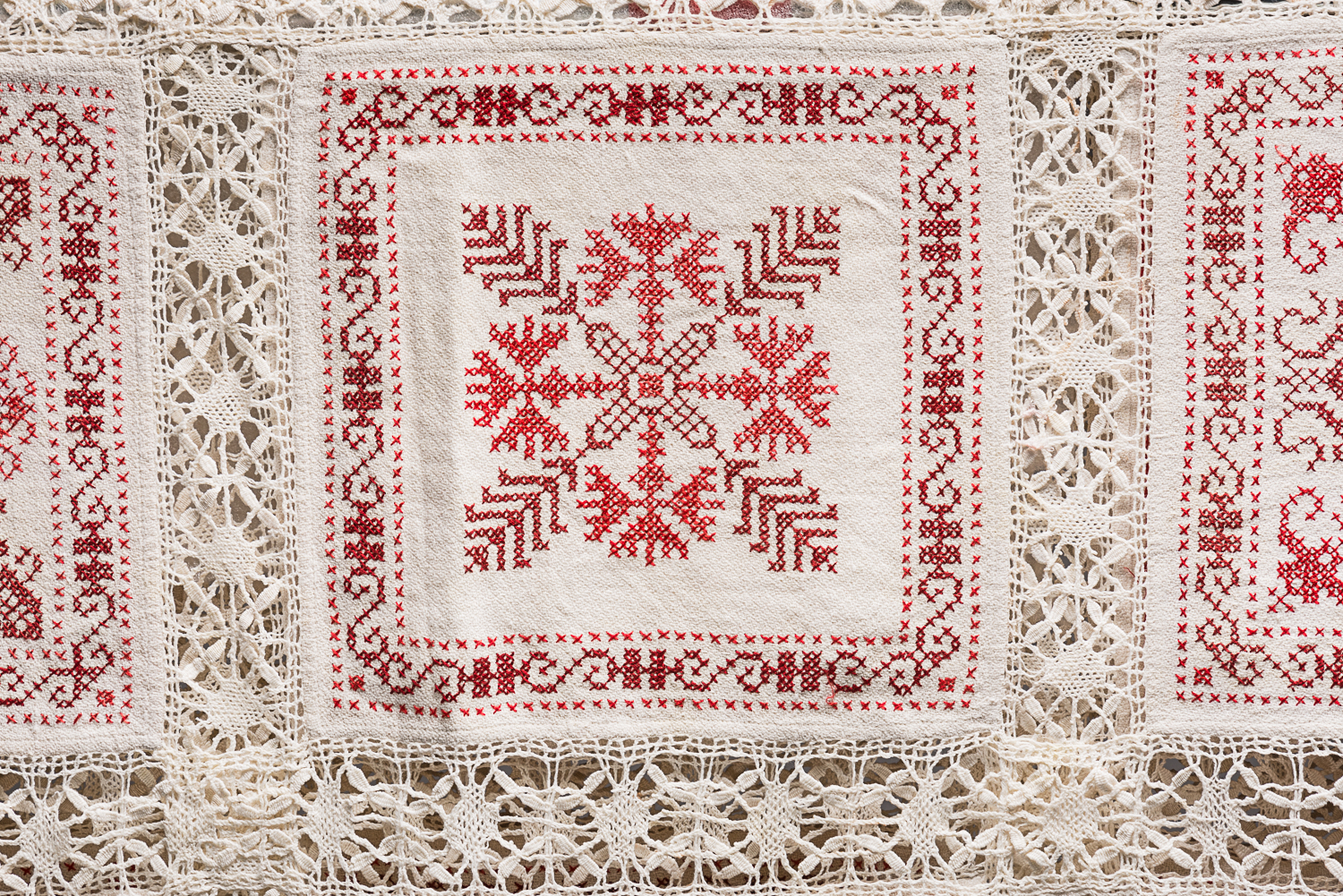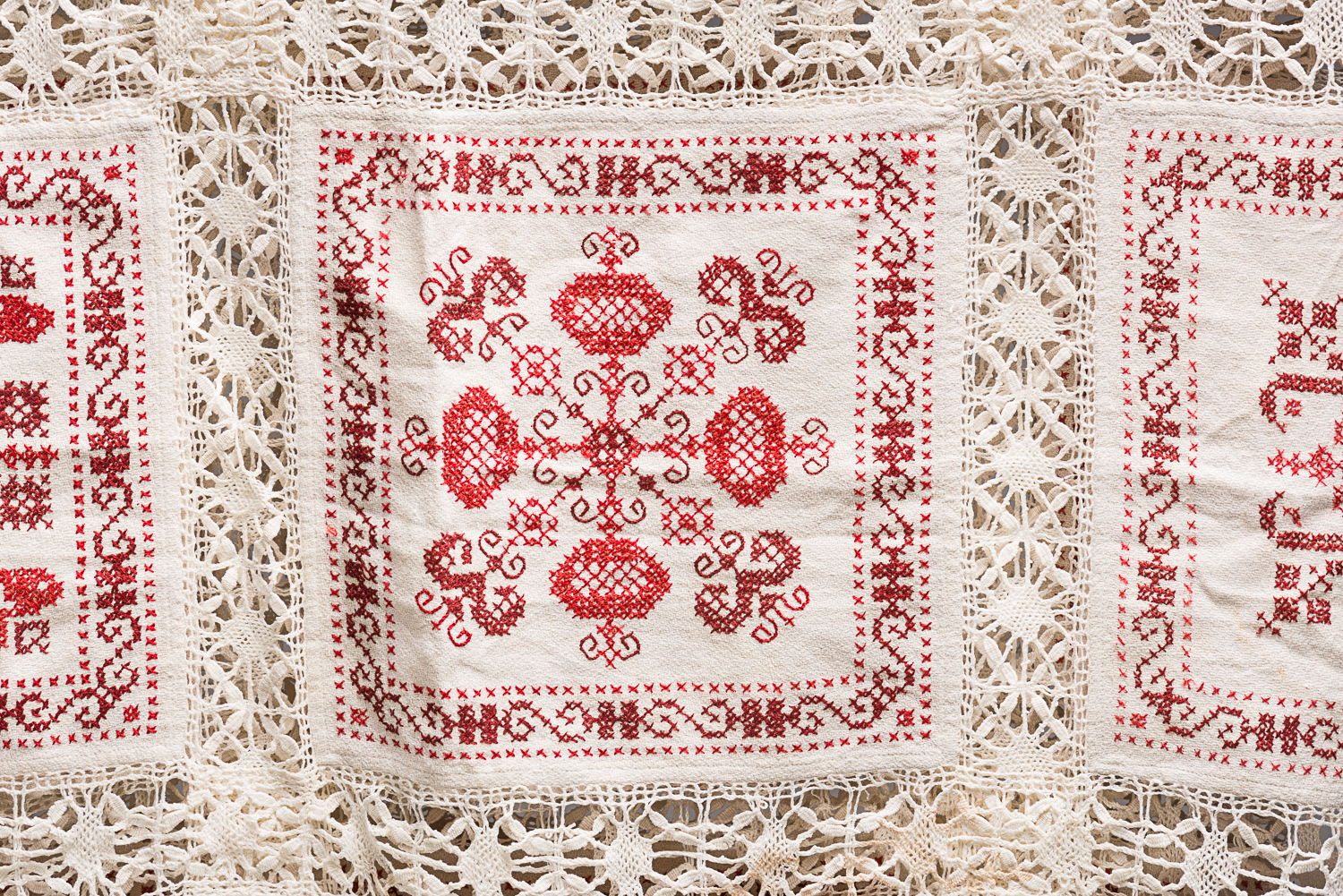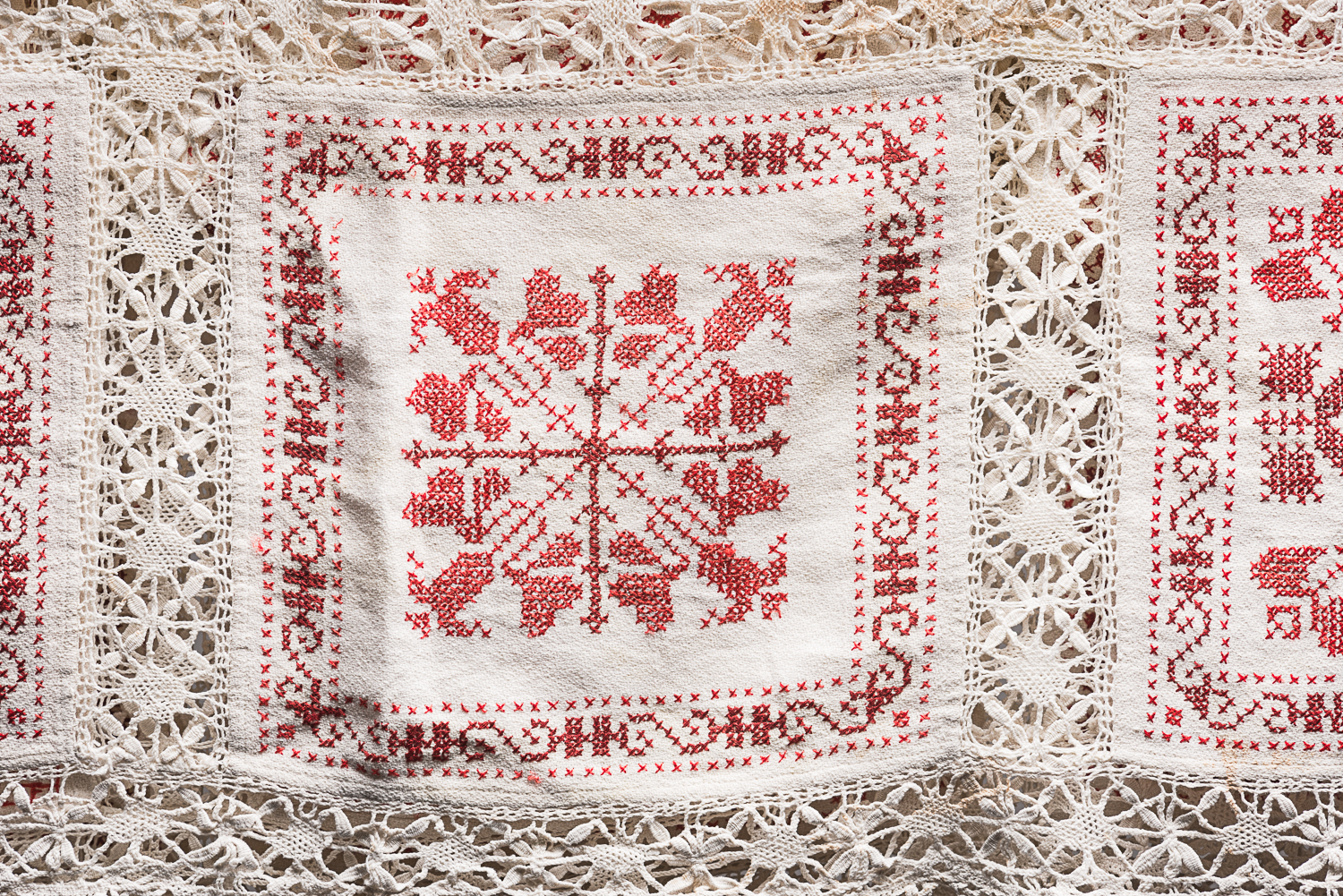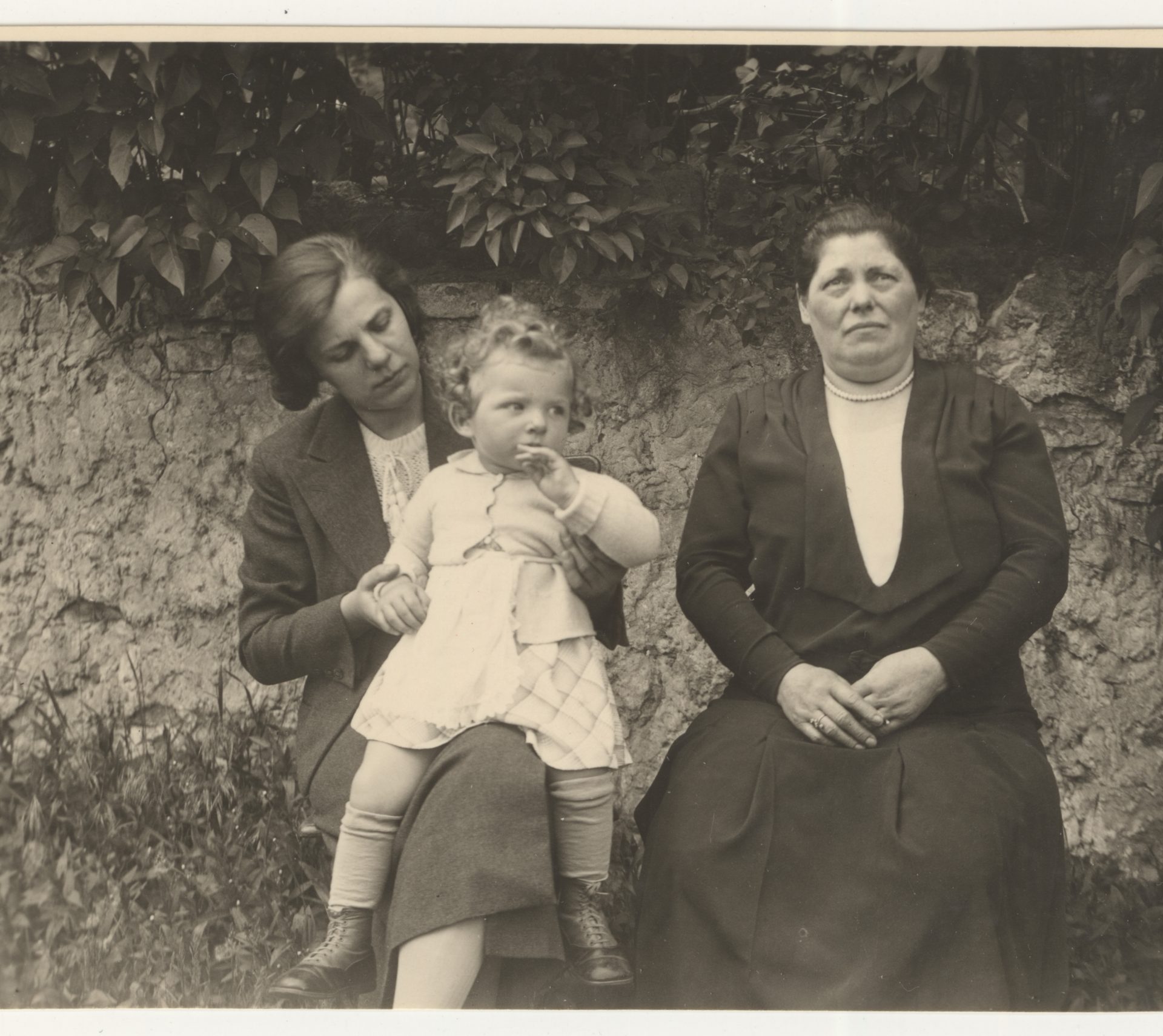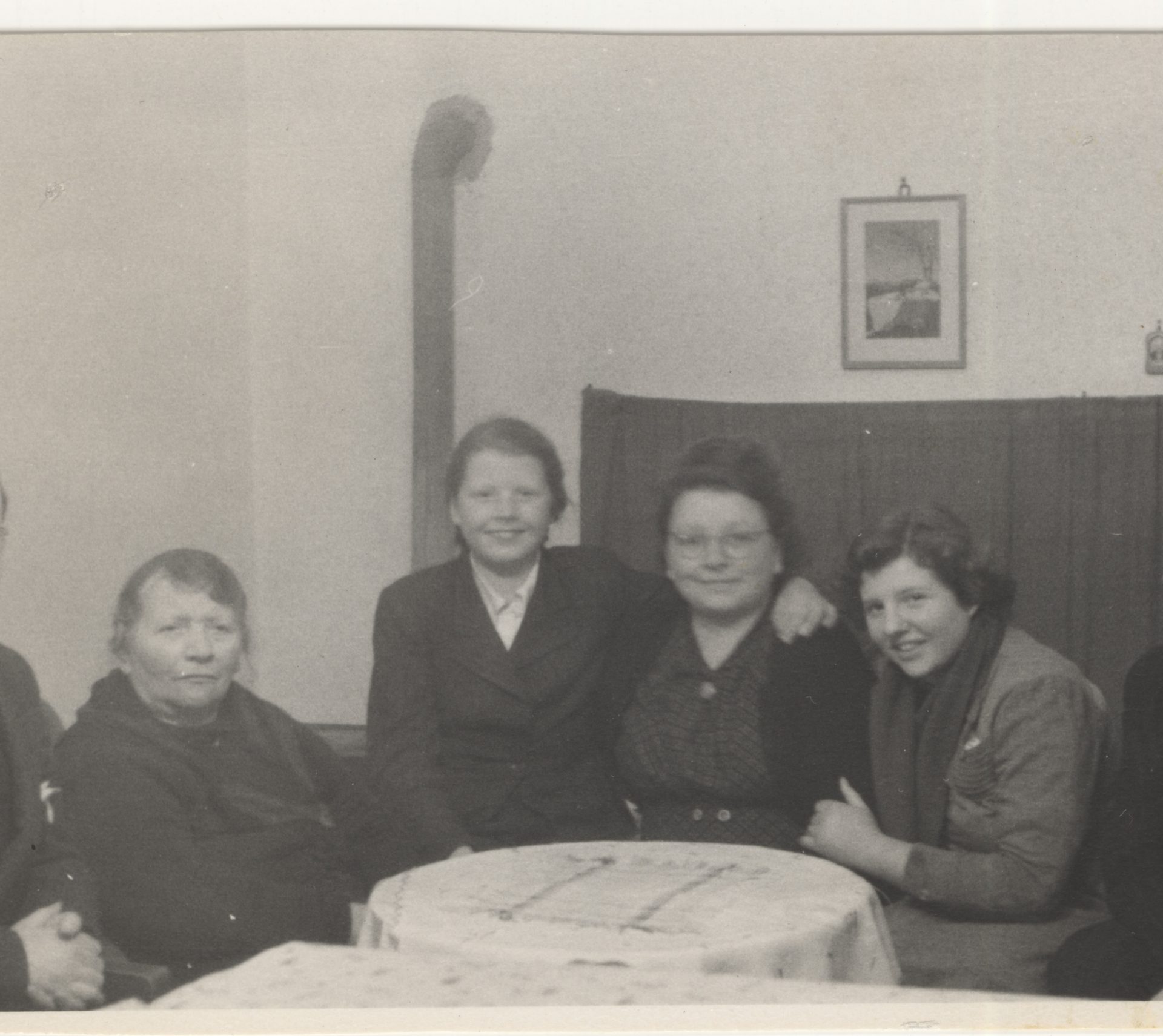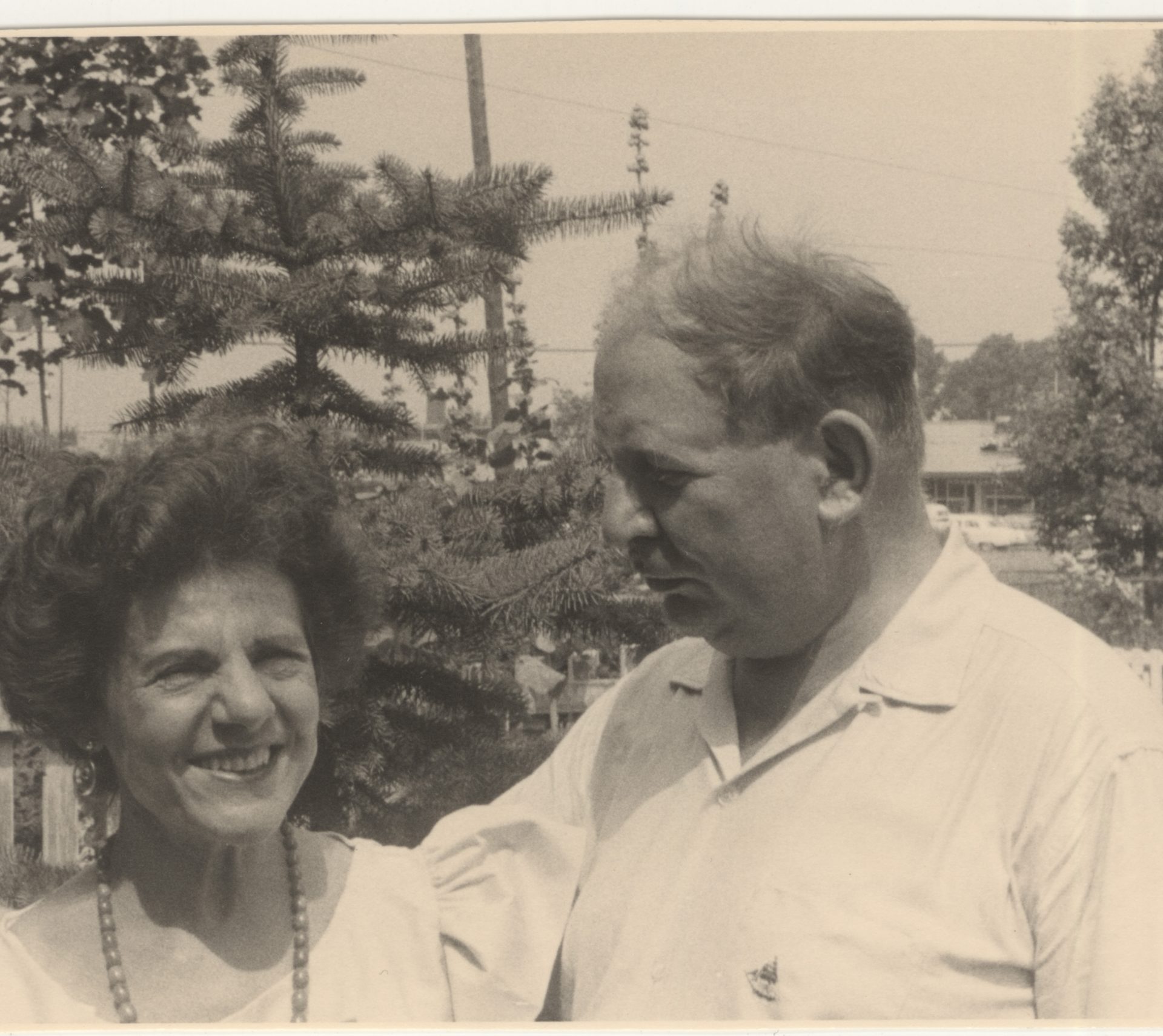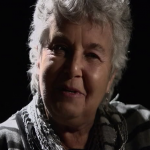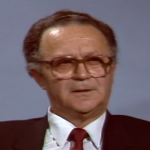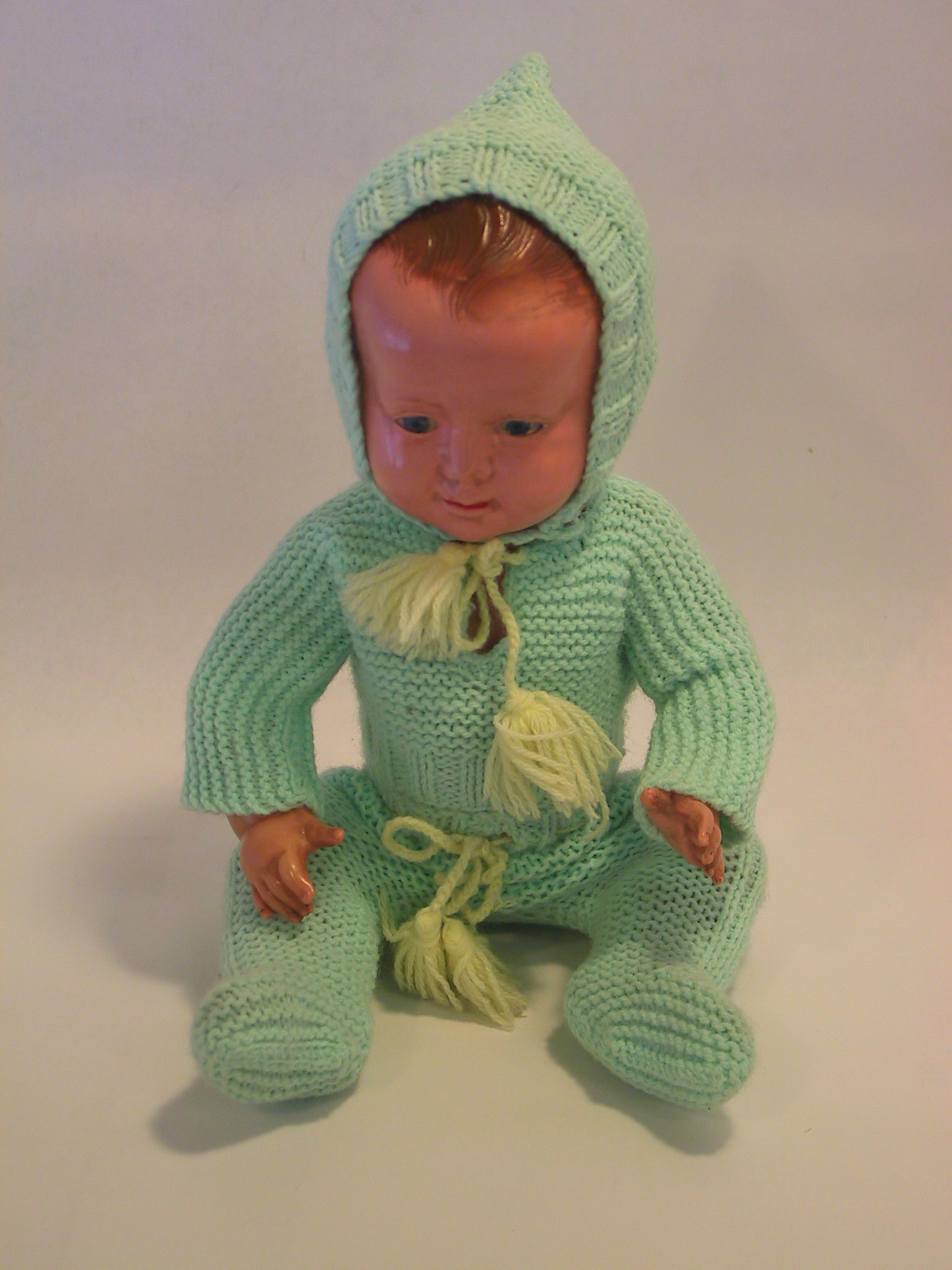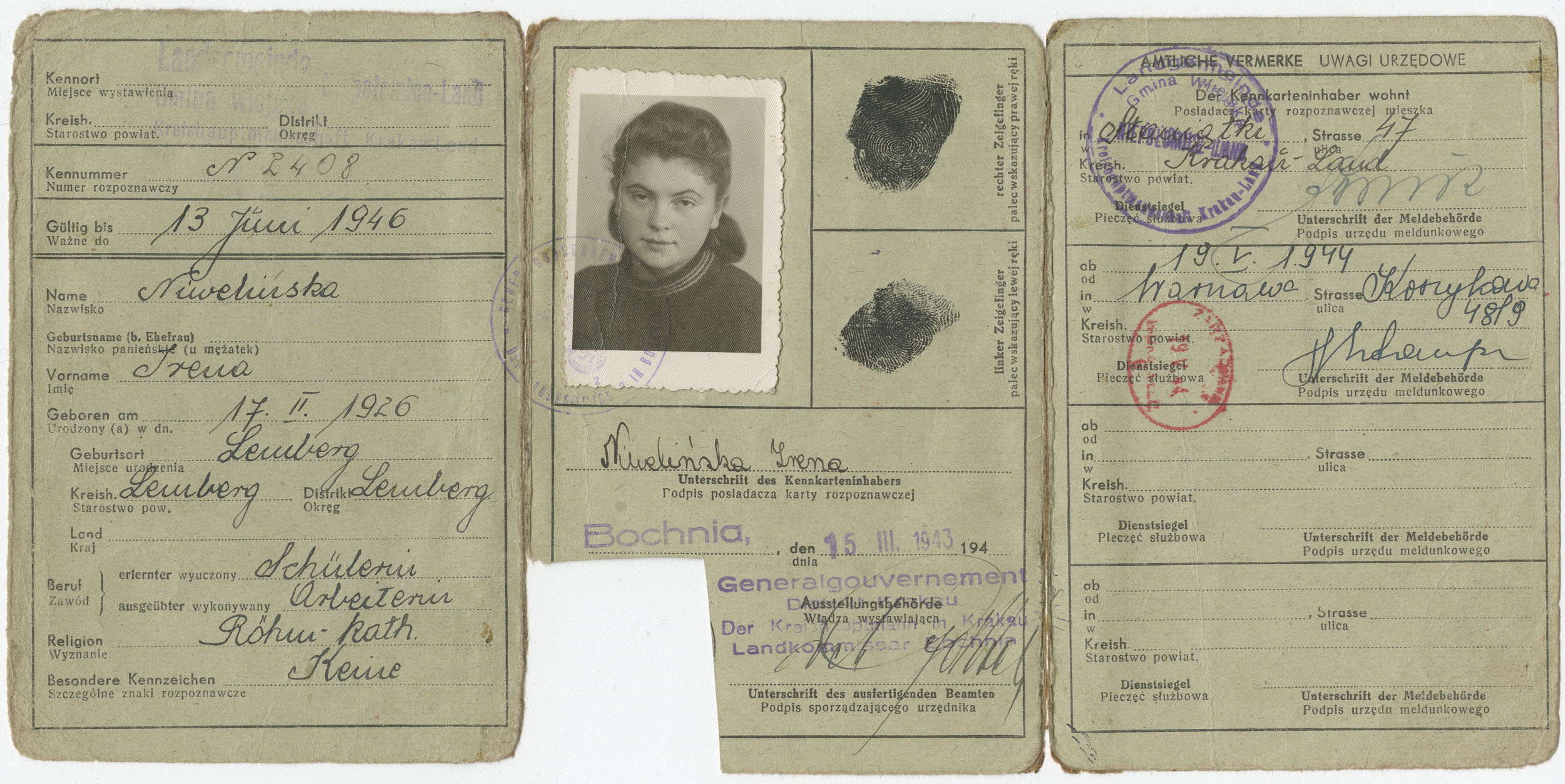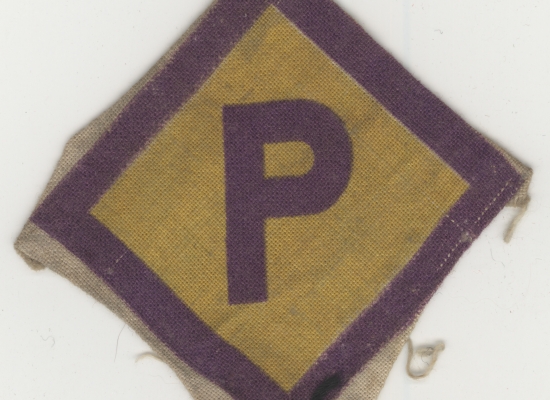This tablecloth was created by 50 Jewish girls in Berlin’s Boehmstift orphanage in the early 1920’s. It is made of 30 linen squares embroidered in cross-stitch. The girls wove the linen, embroidered the squares, and created the lace by hand. They also designed the patterns of the embroidery. Only three of the 50 girls survived the Holocaust: Frida Bone, a woman named Goldschmidt and Erika Voelcker (born Waldmann). One of the teachers gave the tablecloth to Erika when she left the orphanage in 1927.
The Voelcker Family Escape
Erika met her husband Herbert Voelcker, a non-Jewish German, at Berlin University. In 1934, she gave birth to their daughter Karen. The family tried, unsuccessfully, to leave Germany and escape Nazi persecution. When they learned that the Gestapo were searching for them in 1941, they fled. The family moved a total of 167 times during the war, bringing this tablecloth with them each time.
The Voelcker family immigrated to Montreal in 1951 with the help of Frida Bone, who had managed to escape Germany before the war.
Karen donated this tablecloth to the Museum in 2016, in memory of her mother’s friends from the orphanage who died during the Holocaust.
This project is part of the implementation of the Plan culturel numérique du Québec